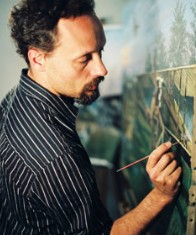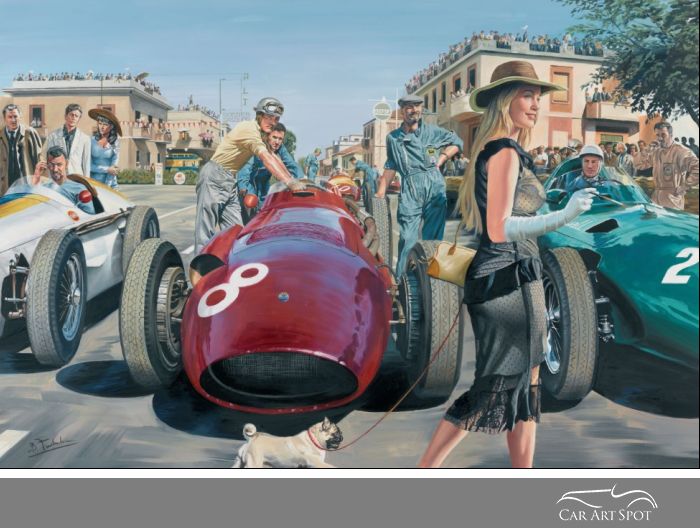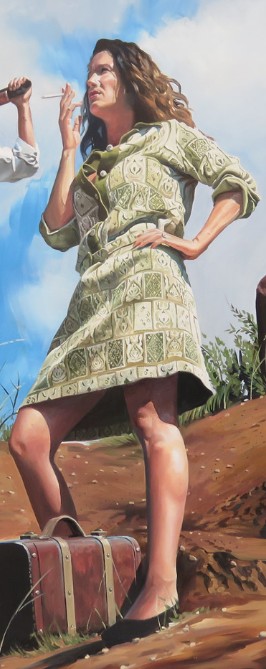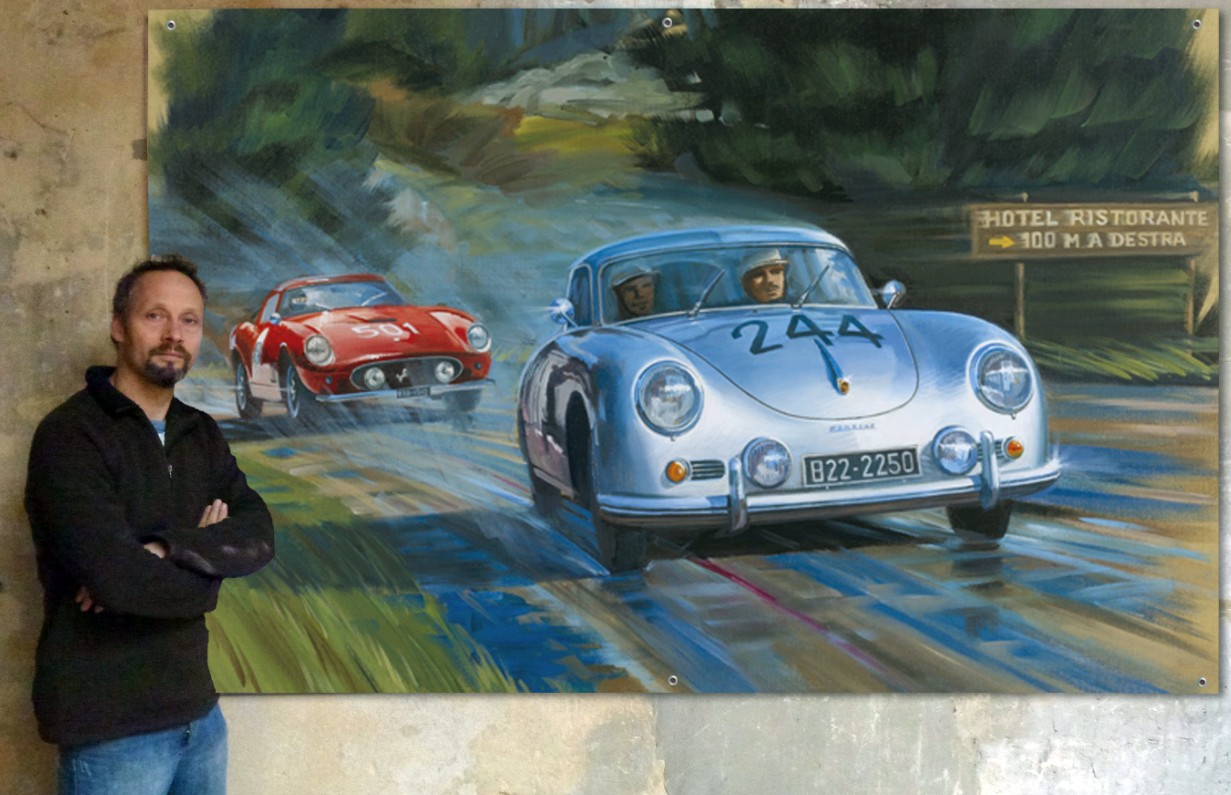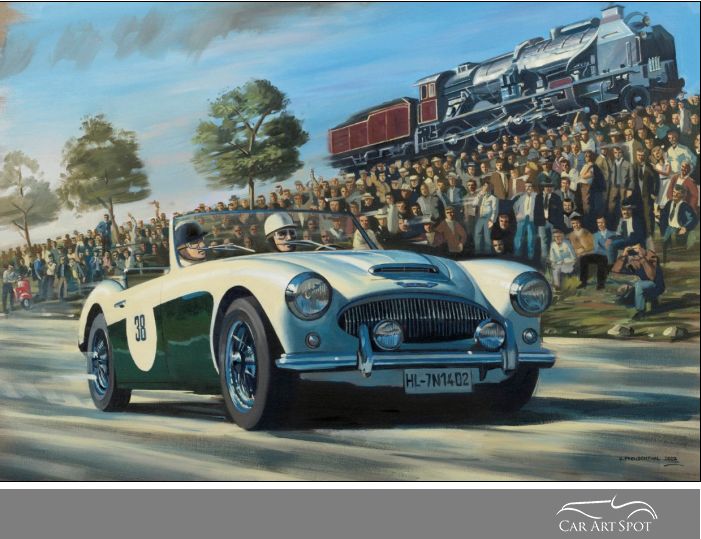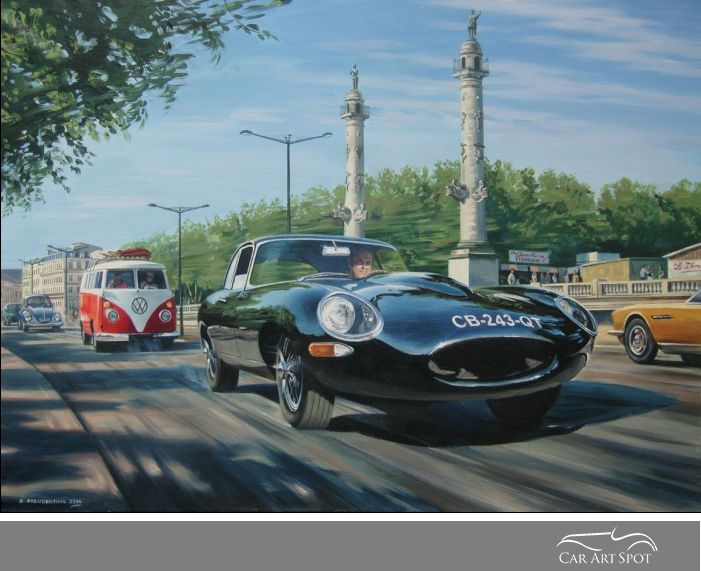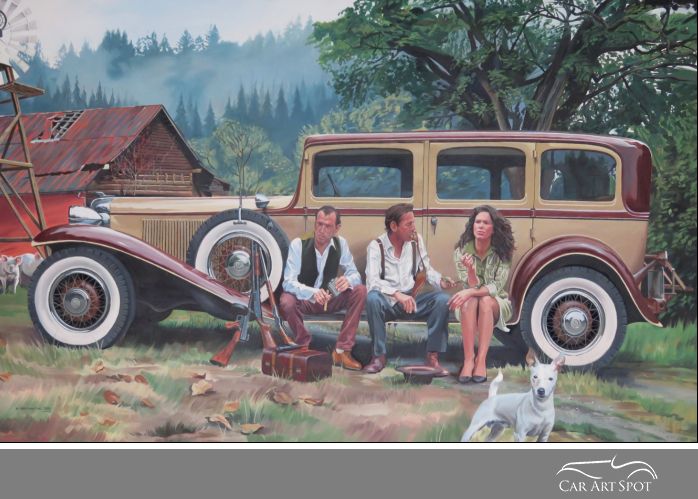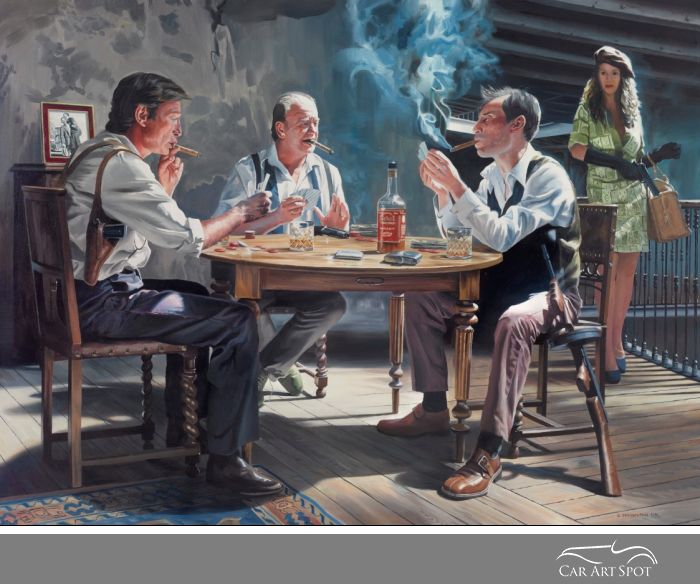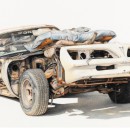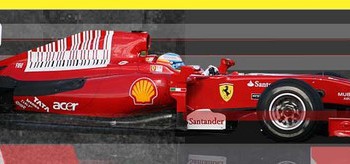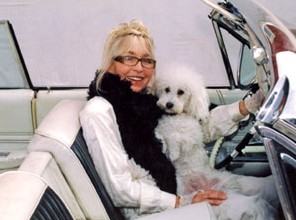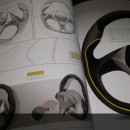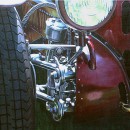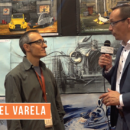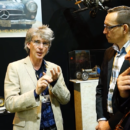Benjamin Freudenthal is not only an automotive artist, he is a ‘Movie Director on Canvas’ in the making!
Benjamin, it was so nice to meet you at the Retromobile in Paris. How did it go for you?
It was the best show I have ever done and a tremendous start to 2016.
In which way was it successful?
My painting ‘La Dolce Vita’ got a lot of attention and my “gangster” paintings were also very popular. People were curious about the human presence in the paintings and really liked the stories in my paintings. The humour and the fact that the characters are doing funny things. People kept stopping, looking and smiling.
Have those reactions confirmed that you are in the right direction?
Yes definitely. A friend of mine, Dominique who was with me at the Retromobile, had been telling me to paint nice girls and people and to tell funny stories in my paintings and bring some humour into my artwork. I think he is right.
You have done many automotive paintings but I think your character paintings are the best. Like Bonnie & Clyde for instance.
Making art is very personal and the problem with automotive art is that you mainly paint by commission and are asked to do what the customer wants. It’s not usually about fun, or fantasy. It’s mostly very serious and you have to be very accurate with all the details. This is why I like to choose the subject myself and especially because I recognize myself much more in my gangster and narrative paintings.
The humour you put in your painting is not always immediately noticeable. I only just realized that you have painted yourself in La Dolce Vita.
It is the tradition in the history of art that the artist puts himself in the background somewhere. Even in movies. In my gangster painting ‘The Barrow Gang’, I am pushing the Ford V8 car and all my friends are around me and Dominique is driving the car. That painting is very big; 3 meters long. Bonnie and Clyde, who you see in the foreground, are my neighbours. They posed for me and I took photo’s of them wearing the clothes but changed their faces to Warren Beatty and Fay Dunnaway. I started doing those kind of paintings about four years ago.
I notice that the lady in those paintings is always wearing the same dress. What is the meaning behind that?
Well those paintings tell a story about a movie and that is the reason why the woman wears the same dress. I first used the dress in my Barrow Gang painting and afterwards it was like a piece of a puzzle. It’s a visual effect to make people understand that each painting is a part of the puzzle and story. I still want to make nine more gangster paintings but you will see them in very different compositions and in different atmospheres; inside banks robbing, racing with cars, being in love, kissing and dying. Every time it will be a typical scenomatic composition with a very typical atmosphere and lighting.
Are they scenes from different movies or do you make them up yourself?
I invent the stories but they are inspired by gangster movies. Tragically most of them will die but I want to make paintings which are both attractive and also very sad.
I find it fascinating that you came up with this story about gangsters and have layed them out in a series of paintings.
Yes, there will be twelve in total. I have painted three and still have nine to paint. I already storyboarded all of the paintings. I just have to paint them now. The problem is they take a very long time, many years in fact and I also have to make commissions for a living in the meantime.
This series is very close to your heart. Will you sell all the paintings?
I will do my best. The first three have already been sold but it isn’t a fashion subject. So I hope to sell them all.
In my opinion your narrative work really shows more of yourself and triggers emotion. I see the difference between your commission work and your personal choice.
Yes, there is a very big difference. Not only in what is shown or told but also technically. There is much more knowledge in my narrative work than in my motorsport paintings. I go much further but maybe because I would really like to be accepted as a painter, rather than an automotive artist. I want to show that I know how to paint and how far I can go. That is why there is such a big difference between my narrative paintings and my automotive productions.
If you compare your older works to your work in 2014/15, your later work is more accomplished.
Yes I agree. I learned a lot from Stanley Rose. He is the person who taught me to be more confident on how to put the brush strokes onto canvas and be myself. I have followed Stanley’s work for many years and if I had not met Stanley and seen his work so closely, or had so many talks with him, I wouldn’t have been able to do that with my last personal artworks. All artists have spiritual favours from people who show them something. Technically, Stanley Rose is very impressive.
Can you share with us how you developed your style and technique and choice of topics?
I am a movie lover but my first real emotions as a little boy, were aircrafts and cars which were in the movies. I’ve always been in love with westerns and television series, but what is it we really love? Is it the actors or the cars? We love films and series because we love the characters, and I wanted to express that through my work. I wanted to paint characters and show that cars are driven by people and by guys who are much more interesting than the machines they drive. I wanted to show that I am involved in the cinema. All those reasons drove me to change my style and show characters. The problem was that a few years ago, I was technically too weak and didn’t have enough experience to do that. Now I have and can really see what I want to do.
Are you influenced by any other artists?
Well obviously Stanley Rose has been a tremendous influence but also other artists like Tom Fritz who is a really good artist. His paintings also tell stories. The Americans are really good storytellers. Norman Rockwell is another one.
With your artwork, the viewer looks and fantasizes their own story.
That is what I want. I started experimenting to see what reactions my work would get.
Well with ‘The Share’, the story springs out at the viewer.
Yes, the animals give it some humour and the painting is not overly sentimental. This painting wouldn’t have been the same without that dog in the front.
So what is your dream? How do you see yourself in five or ten years from now?
I will continue with narrative paintings of people and many crowded paintings with funny things and a lot of humour. I will cast people to help me by posing for the characters. My future work will probably be compared to a film director who makes movie scenes on canvas. I want to be a film director on canvas and give people the impression that they are in the cinema when they look at my artwork.
I think the success you have had at the Retromobile is a good indication that you are on the right track Benjamin.
I think so too and I am really motivated to pursue this course. My best work is yet to come!
Keep an eye open for more of Benjamins work and visit his website.


